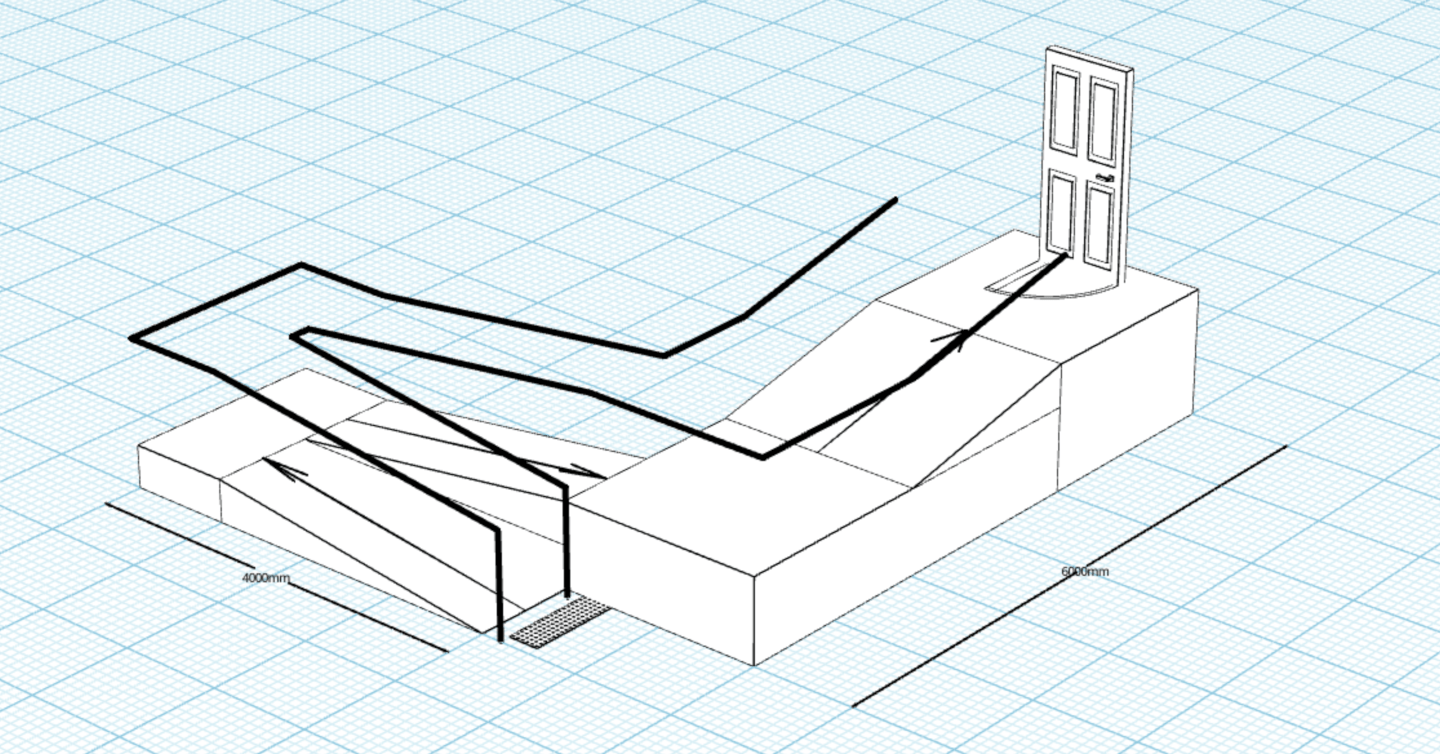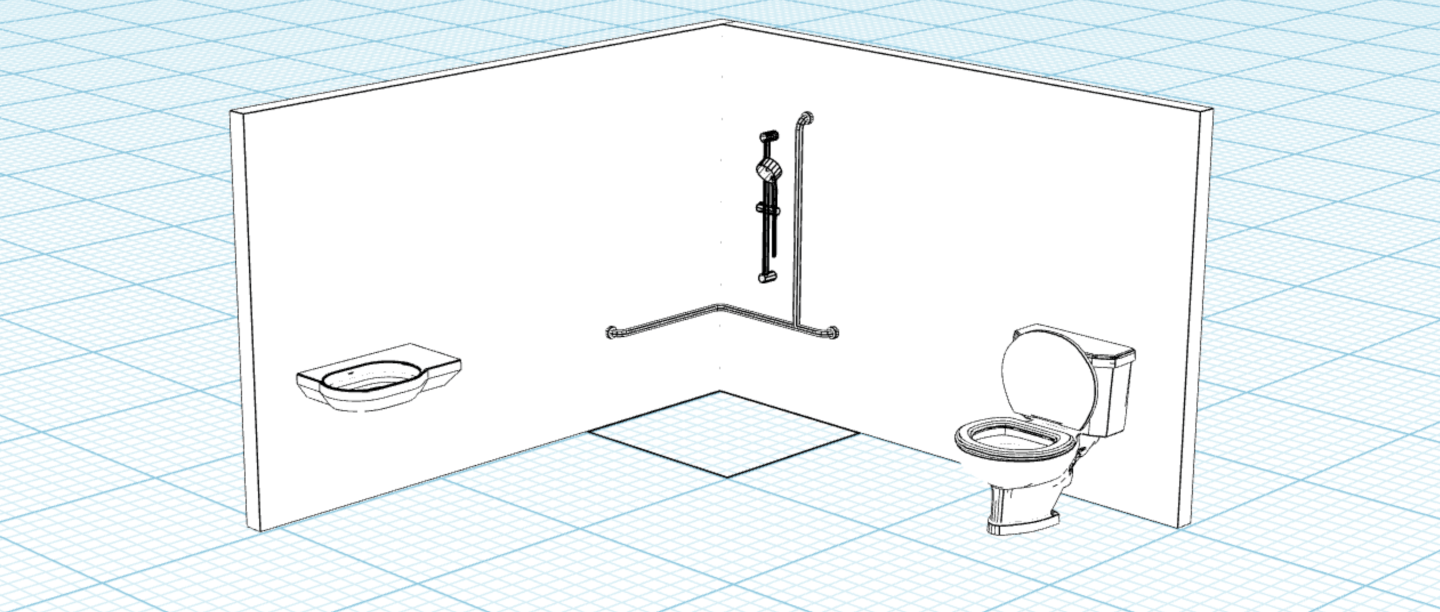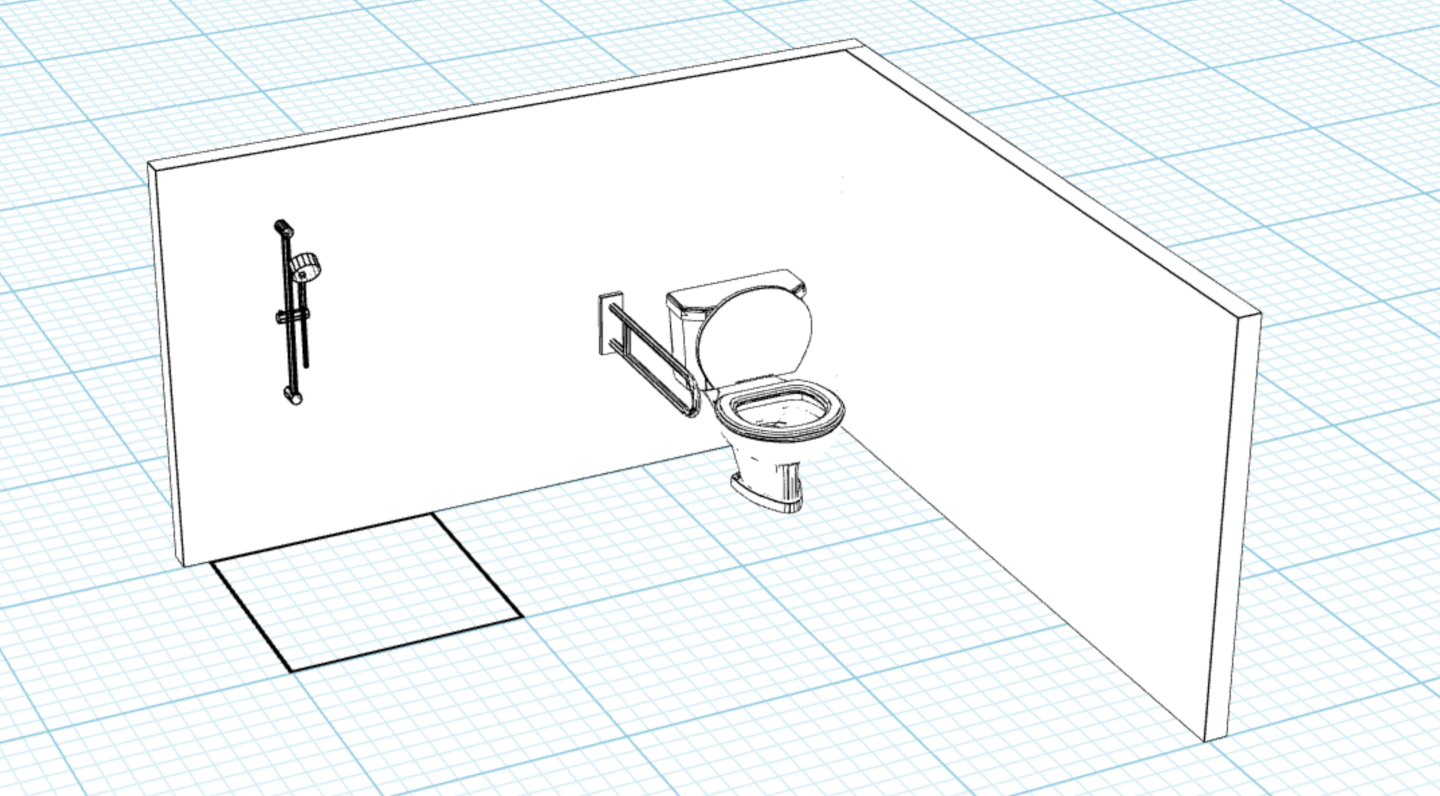An Occupational Therapist’s Guide to Rails
As an American Occupational Therapist, an important part of your role may be to assess for and prescribe rails.
A comprehensive OT assessment identifies daily living challenges and recommends home modifications like rails.
This guide will provide key information about rails, including essential considerations for prescribing them.
Additionally, it covers the documentation and diagrams commonly used in the process.
We say almost because:
- A comprehensive Occupational Therapy functional assessment is critical to ensuring correct rail prescription;
- There is always more to learn;
- Building standards vary in each country and are subject to updates.
We recommend you read this guide alongside our Occupational Therapist’s Guide to Ramps and Occupational Therapist’s Guide to Stairs.
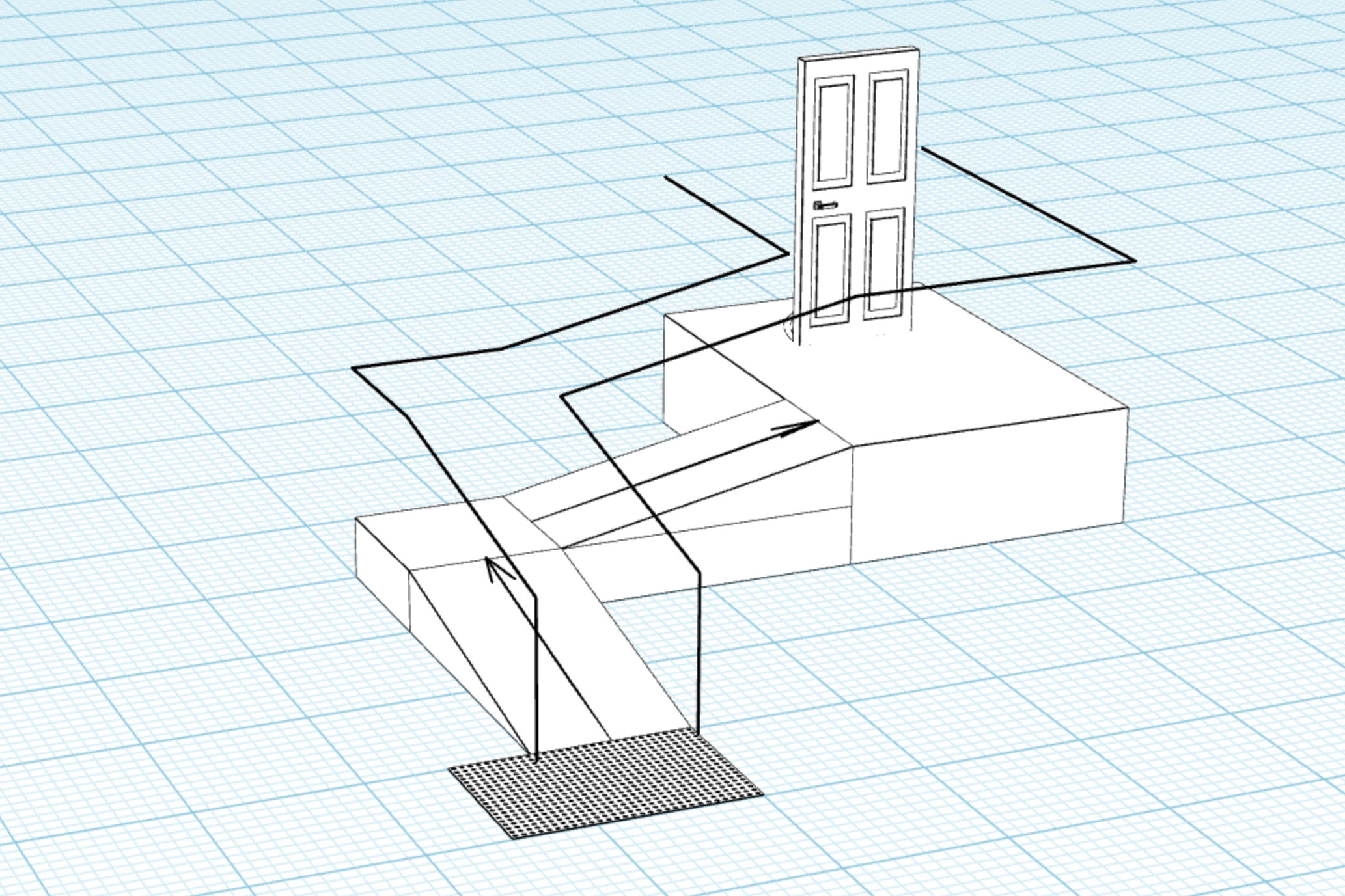
Introduction
As building standards can vary in each country, this guide should be used in unison with the building standards of your country.
In this article, we refer to the ADA Standards for Accessible Design Title III Regulation 28 CFR Part 36 (1991) and Occupational Safety and Health Standards 1910.29 (Subpart D) as a guide.
In general, it is recommended that rails should:
- Be scripted to meet the individual’s functional needs;
- Be installed by a trained professional, such as a builder or contractor;
- Be fixed or firmly secured;
- Have a diameter between 1.25 and 1.5 inches or be of a shape that offers equivalent gripping;
- Be unobstructed to the passage of the hand along the length of the rail;
- Be set out 1.5 inches from the wall to avoid injuries to the hand when gripping the rail and to achieve an optimal grasp;
- Be able to withstand at least 250 lbs of force, if the rail is a grab bar;
- Be chosen based on properties that suit the area in which it will be used (i.e. non-slip properties if used in wet areas such as bathrooms or outdoors).
There are no ADA-specific requirements for the amount of force a handrail should be able to withstand. However, the Occupational Safety and Health Administration requires handrails and top rails within stair rail systems to withstand a minimum of 200 pounds of force without failure. In addition, a rail can only be mounted in a recess if the recess is no more than 3 inches deep and extends 18 inches or more above the top of the rail.
When assessing and prescribing rails there are three important things to consider:
- Functional need
- Rail properties (finish, location, size and fixing)
- Documentation and Diagrams
Let’s dive in and take a closer look!
1. Functional Need
As Occupational Therapists, we best determine the prescription of grab rails and handrails based on the client’s biomechanics, anthropometrics and functional use.

The correct prescription of rails is important to ensure that the rail provides support where necessary to perform specific tasks, facilitate transfers and/or support mobility.
In the United States, we are able to refer to the ADA Standards for Accessible Design Title III Regulation 28 CFR Part 36 (1991) to guide our recommendations.
We use the standard as a guide or starting point with recommendations based on the unique needs of the client as determined by a comprehensive functional assessment.
So, what are biomechanics and anthropometrics?
- Biomechanics is the study of anatomical principles of movement that takes into account the unique movement patterns of an individual as a result of their age, health and body measurements.
- Anthropometrics are the body measurements of an individual including their height, weight, width and depth, which can impact reach range and also the force they may place upon a grab rail.
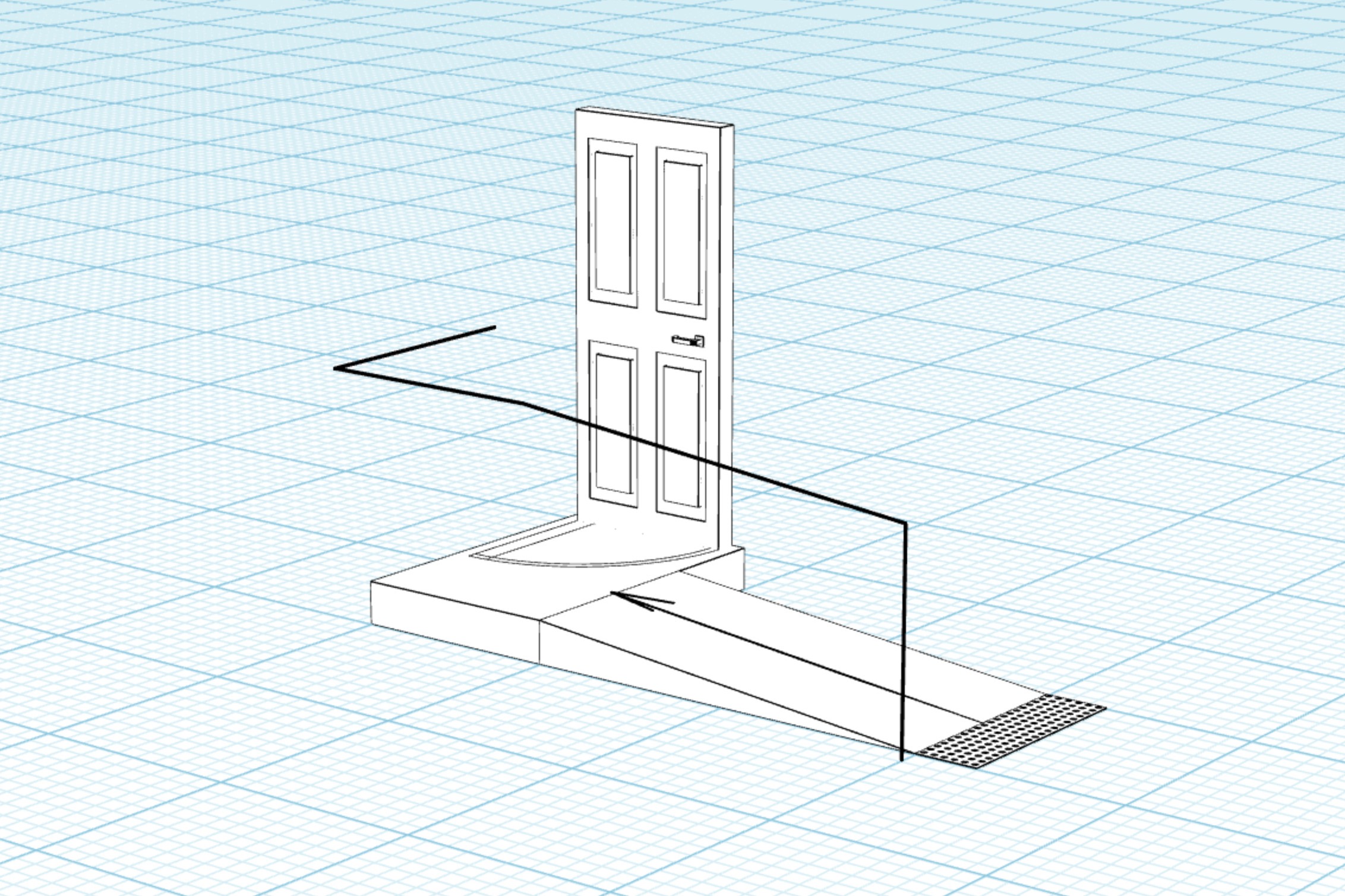
Putting it into practice…
When assessing a client to determine if they may require a grab rail or handrail, we look at how they interact with their environment.
Generally, indicators will be most notable when you complete a walk through of the home with your client and request they demonstrate how they are currently completing tasks.
You may want to consider:
- Where do they place their hand?
- Do they push or pull to stand?
- How do they move during the task?
- Are they seated or standing during task completion?
- Which is their dominant hand?
These considerations can help determine the type of rail and the optimal positioning for it.
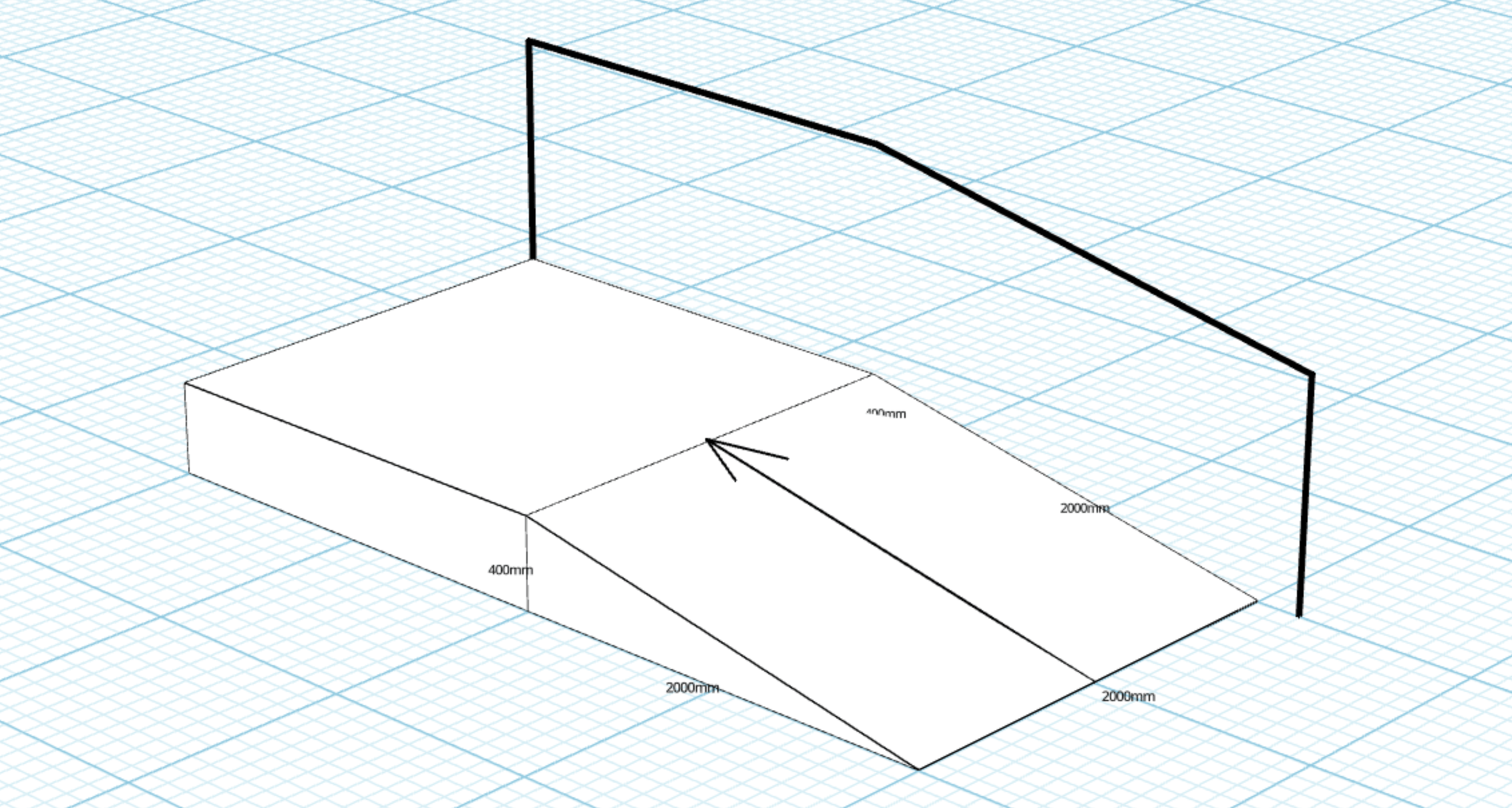
They may also lead you to deviate from the relevant standards of the country in which you are operating.
2. Rail Properties
When referring to rail properties, we are referring to the type, finish, location, size, and fixing.
Understanding the properties of the rail enables Occupational Therapists to effectively recommend rails that are suitable for the functional and clinical needs of the client.
We describe rails by;
- The diameter, i.e. 1.25 in
- The direction in which they are installed, i.e. horizontal or vertical rail.
- The shape in which the rail is constructed, i.e. right-angled rail.
- The points it connects to, i.e. floor to ceiling.
- The side of ascension, i.e. right-hand ascending.
Further to this, we classify rails as either grab rails or handrails;
- Handrails are generally classified as rails mounted on posts or to walls that can be used for support inside or outside of the home; if handrails surround stairs, they may also be referred to as stair rails
- Grab rails (also known as grab bars) are internal to the home and installed as transfer or support aids. They are most often seen in the bathroom – by the toilet, inside the shower, or just outside of the shower. They come in a range of lengths and can be installed vertically, horizontally, or angled. Their location, length, and direction are all based on the support a person needs.
When prescribing rails, it is also important to consider the Safe Working Load (SWL).
If an individual is close to the safe working load (SWL) or has a fluctuating weight that brings them within this range, it’s important to inform the builder installing the rail.
This allows them to add reinforcement as needed to meet the building codes relevant to the region.
The most common grab rails prescribed by Occupational Therapists and their benefits are:
Horizontal grab rails
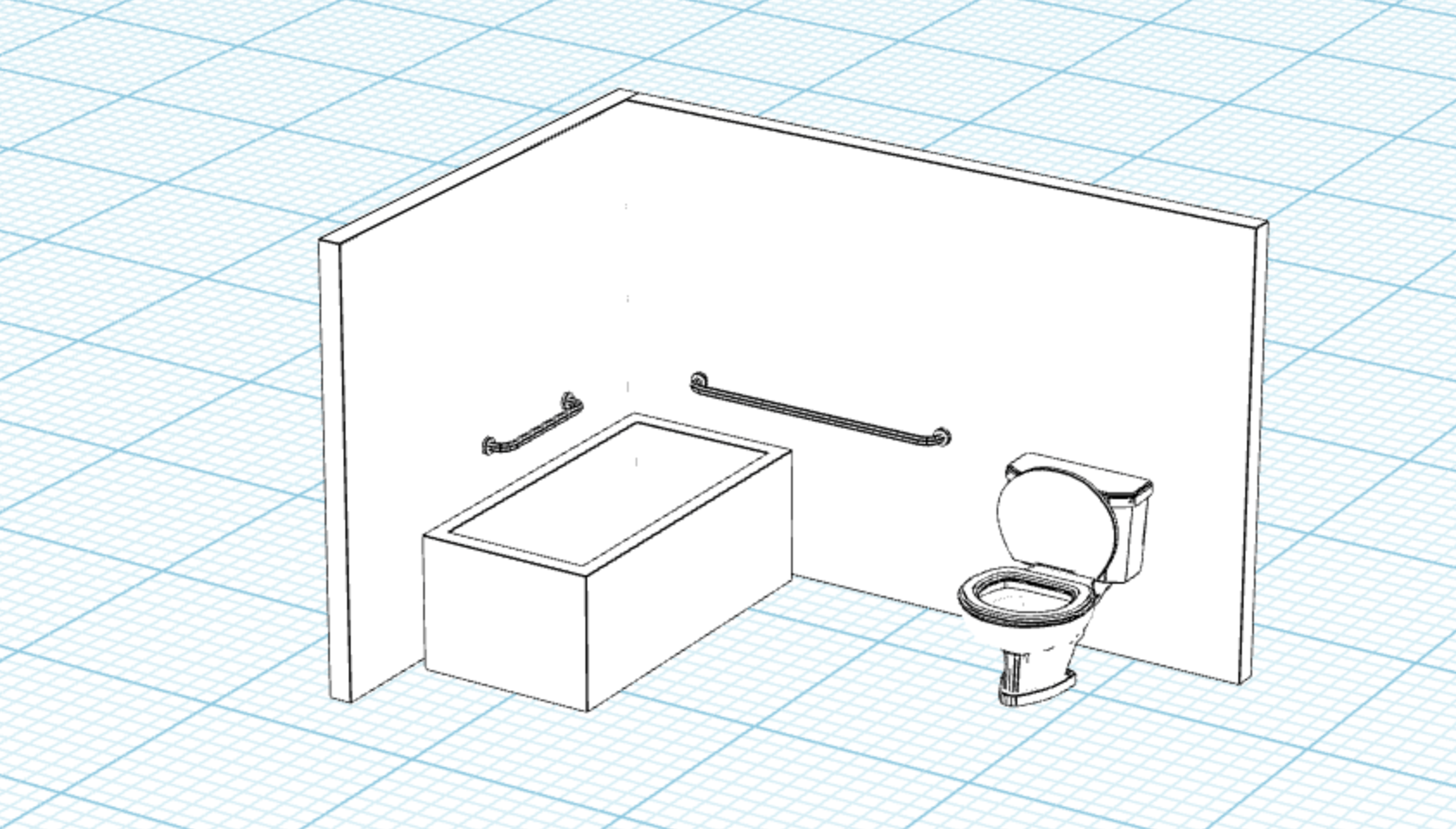
Horizontal rails assist individuals when pushing up from a seated position and provide support when lowering, for example, onto a toilet.
Some individuals find it easier to push down on a rail rather than pull up on one, and for those who prefer this action, horizontal rails are more commonly prescribed.
Vertical grab rails
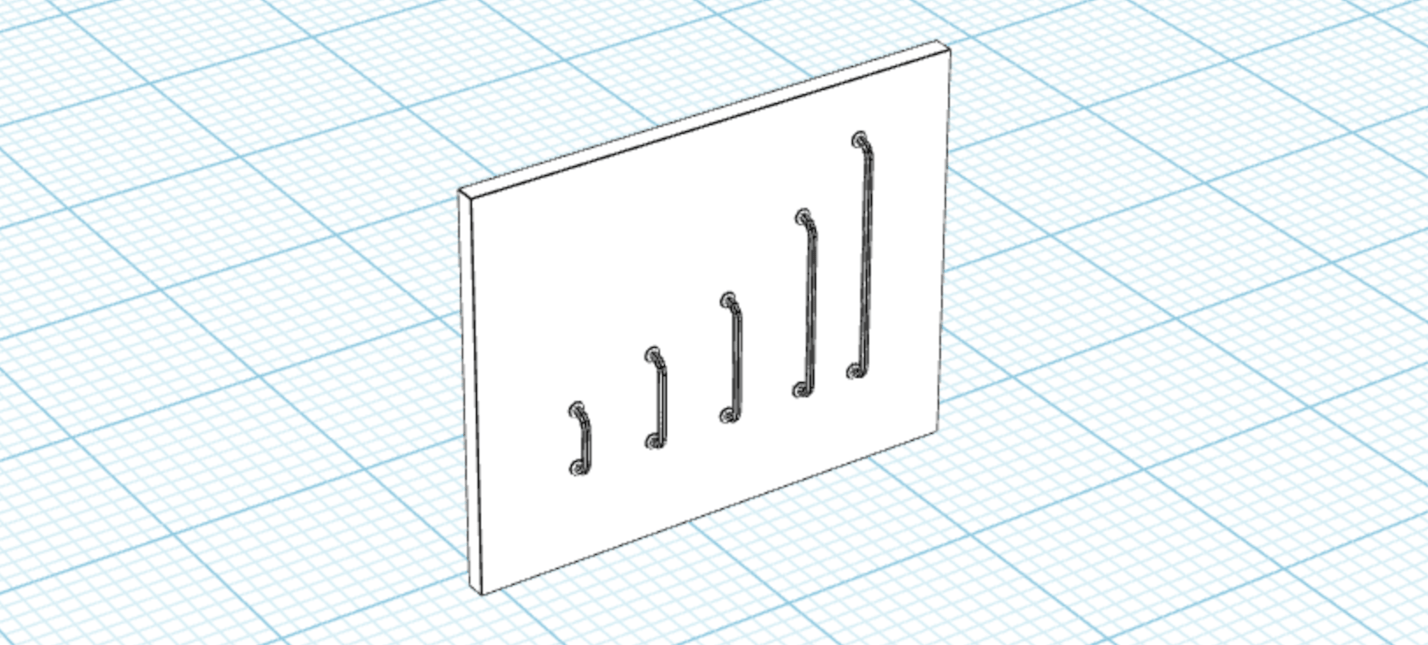
Vertical rails assist when pulling up into a standing position or when standing for stability.
Individuals that experience difficulty pushing through their arms or wrists, may prefer a vertical rail. Vertical rails are often installed at threshold steps, doorways or entries.
Diagonal or angled grab rails

Rails that are fixed at an angle enable someone with weak or painful arms or wrists to support their forearm whilst pushing up.
Typically, a diagonal rail is placed at an angle of 45° upwards and away from the user.
This keeps the wrist in a neutral position, and the hand can travel up the rail to maintain the support once the person throughout the transfer.
Right-angled grab rails
Also known as L-shaped rails. Rather than installing a separate horizontal and vertical grab rail, a continuous right angled rail can be prescribed.
A right-angled rail is considered safer than the installation of two rails side by side as there is no gap between the rails that could result in entrapment or injury, and it offers a continuous line of support when moving through a movement or transfer.
This type of rail is often prescribed next to a toilet.
Drop-hinged grab rails
Also known as drop-down, swing away, or fold-down rails.
A drop-hinged rail is a common type of grab rail that assists someone with transferring on and off a toilet.
It is commonly prescribed when a rail is needed at a point away from a side wall, i.e. the opposing side of the toilet. These rails often require the wall to be reinforced to be able to withstand the downward pressure applied to the grab rail during transfers.
Consultation with a builder is recommended for successful prescription and to ensure the proposed works are viable for the home environment.
Floor to ceiling grab rails
Also known as a fireman’s pole. As the name suggests, this rail extends from the floor to the ceiling vertically.
A floor to ceiling rail may be suitable in bathroom modifications to support an individual where other rail types are not able to be prescribed, such as if support is required in areas outside of reach of a wall.
For example, beside a bath. These rails require investigation for the support structure of both the ceiling and floor, which results in them being less commonly prescribed.
Clamp-on grab rails
A clamp-on grab rail is secured via a clamp system to the edge of a bathtub and does not require installation by a licensed contractor.
Clamp-on rails are not preferred due to the risk of loosening and not being maintained adequately by the user and are typically recommended only when a fixed grab rail is not appropriate or suitable.
Suction grab rails
Suction grab rails are also not typically recommended due to the risk of loosening and coming unstuck, which poses a serious fall risk.
Suction grab rails also cannot achieve the required 250 pounds of downward force, as they are not installed at studs or supports.
Suction grab rails can also rip off tiles on walls, which happens when the suction itself is stronger than the bonding agent of the tiles to the wall.
If required to be used, suction rails should be used as a short-term solution only and regularly checked to ensure they have not become loose.
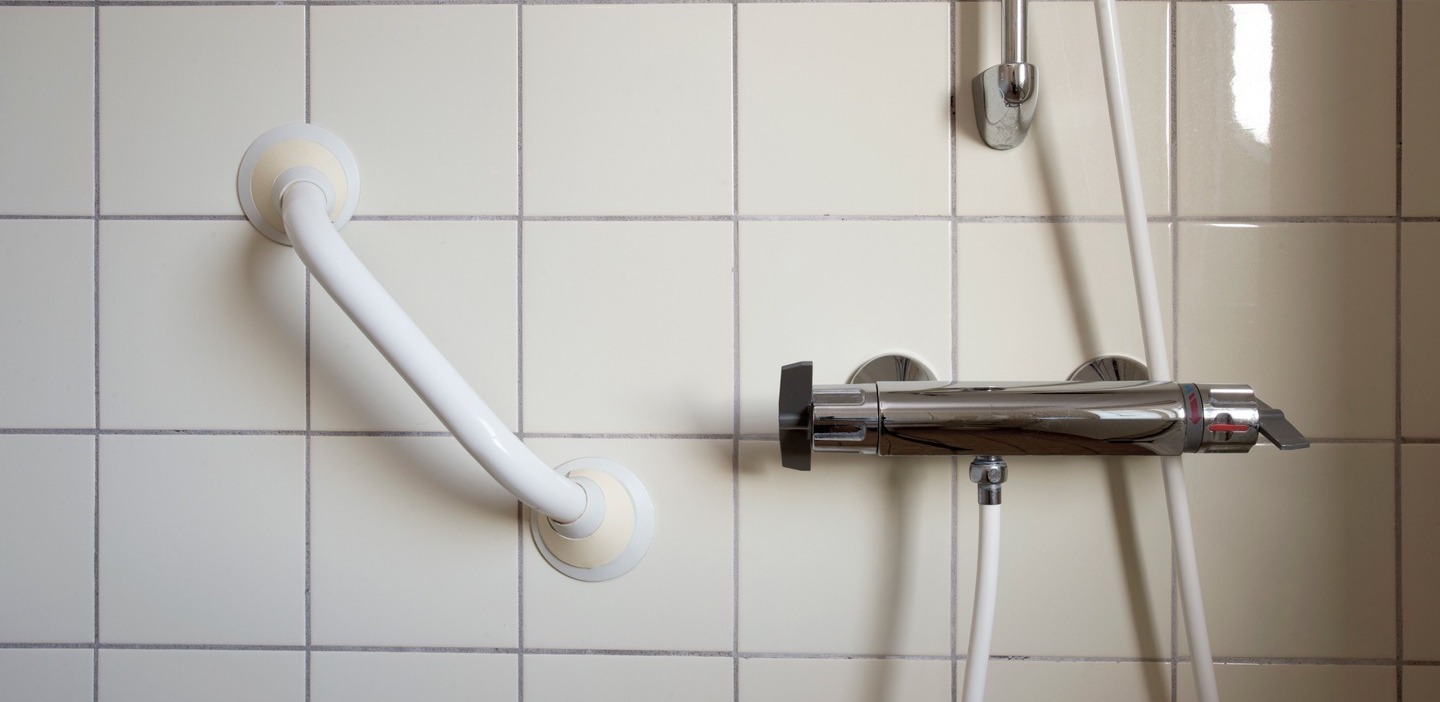
Finish
Rails are available in several material finishes and should be prescribed based on the individual unique care needs of the client.
The finish of rails is particularly important in wet spaces and is often influenced by aesthetic preferences.
Some of the most common rail finishes include:
Polished stainless steel
This finish is considered more attractive and is hard wearing, although can be quite slippery to hold, especially when hands are wet.
This finish is a common option for grab rails at thresholds and for handrails at internal staircases.
Galvanised steel
This finish is prepared by adding a layer of zinc coating to the surface to reduce the likelihood of corrosion.
It is commonly recommended for external stairs and in conditions where corrosion is more likely to occur, for example, in coastal regions.
Slip-resistant / peened / knurled / ribbed finish
This is a moulded/coated textured surface that provides increased grip even when wet.
This finish can cause discomfort during gripping, particularly for those with increased sensitivity and are typically not suitable to slide the hand across.
Powder-coated
Powder-coated rails are the most commonly prescribed for wet spaces, including bathrooms as they are hard-wearing and more resistant to the effects of condensation.
This finish is also customisable with a choice of colours available to meet aesthetic requirements.
High contrast finish
A high contrast finish can be achieved by choosing a colour that contrasts with the wall behind it.
For example, a person with a vision impairment may benefit from a black powder coat finish to contract to a white tiled wall.
Size
The size of rails is predominantly determined by two key factors: the location of fixtures, i.e. studs, and the functional need, i.e. higher or longer for taller clients.
In the US, there are standard-length rails at 12, 16, 18, 24, 32, and 36 inches that are available to be purchased off the shelf from local hardware stores, or custom-made lengths can be manufactured by licensed professionals.
Fixing
It is very important that grab rails have strong and stable attachments in order to effectively support the weight of the user.
Unfortunately, many houses do not always have internal walls that are ideal for the installation of grab rails, and installation of rails cannot always be achieved as initially recommended.
It is the responsibility of the builder or contractor to install the grab rail correctly, however, the Occupational Therapist should have a sound understanding of the different fixings and their requirements to assist with prescription.
Some fixing options and the associated considerations include;
Traditional brick, masonry, or concrete

There should be minimal restrictions with fixing grab rails to traditional solid walls.
Any plasterboard or tiled surfaces on top of the solid wall, should not affect the fixing as long as the fixture is secured deep enough.
Lightweight, aerated, and hollow bricks
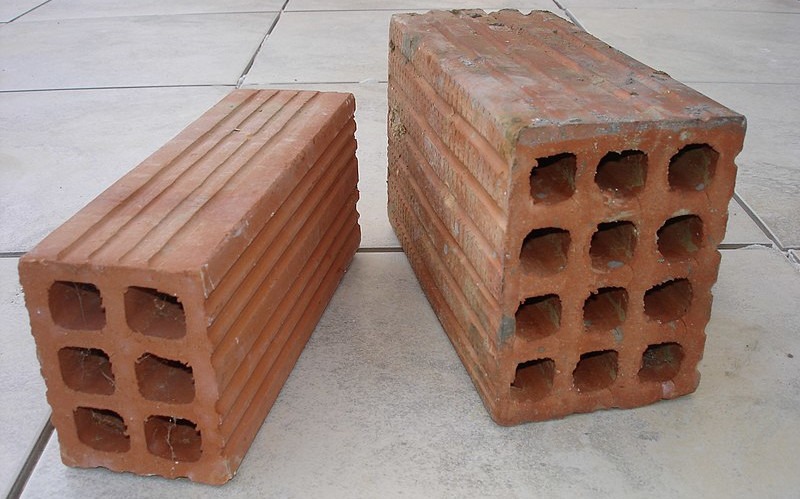
Lightweight, aerated, and hollow bricks are typically unable to withstand the loads required of a grab rail.
Consult a contractor before recommending rails to be placed on these structures.
Stud walls

Most commonly, grab rails are installed into stud walls.
In the United States, stud placement depends on the age of the home. Most newer homes have studs 16 inches apart, while older homes typically have them 24 inches apart. Either way, this information is useful to know when considering recommending horizontal grab rails. The builder may contact you to deviate from your proposed position to align with the studs.
When completing major modifications, the walls are stripped back and structural sheeting or blocking is able to be fixed between studs increasing the options for placement of grab rails.
Steel framed
When considering the installation of rails into steel framed houses, it is important to consider the client’s weight as well as the placement of studs. For example, a grab rail mounted in the center of a 16g 3 ⅝ steel stud can support over 500 pounds.
However, the grab rail itself must have a similar weight capacity in order to offer this level of support. Many grab bars are weight rated to 250 pounds, though there are others that can withstand up to 500 pounds.
Fibreglass or moulded shower units
These units are not suitable for installation of grab rails. This material is typically found in caravan parks and mobile homes, although can be found in standard homes too.
Location
The location of the rail is determined by;
- The individual’s unique care needs as assessed in the comprehensive Occupational Therapy functional assessment.
- The fixing points available based on the construction of the home and information gained in consultation with a trained professional such as a builder.
According to the ADA Standards for Accessible Design Title III Regulation 28 CFR Part 36 (1991), the following information can be used as a guide to inform the clinician on where to locate a grab rail*.
*Note: The height of the horizontal rail from the finished floor level (FFL) is always calculated to the top of the rail.
Toilet
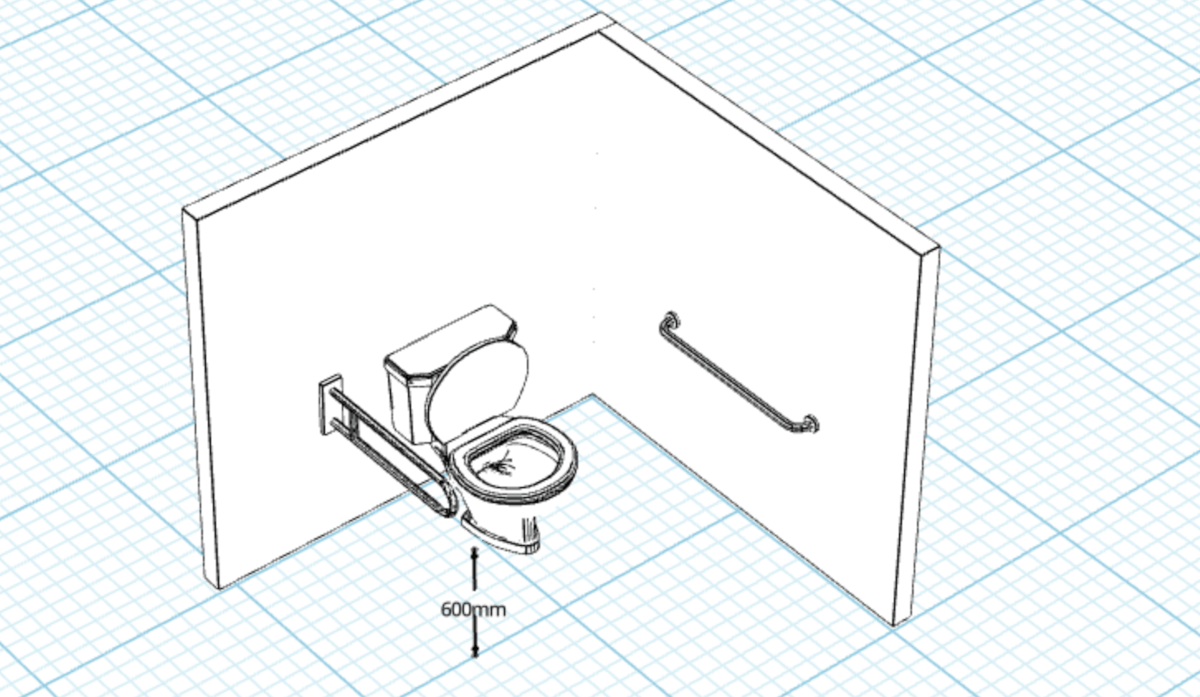
Grab rails are often fixed against the wall alongside a toilet. There can be occasions where this is not possible due to the wall being too far away from the toilet or an obstruction preventing installation.
In these situations, a drop-hinged grab rail that is fixed to the wall behind the toilet may be suitable to prescribe.
When considering installation of a rail near a toilet, consider what support the client will need during the movement sequence from sit to stand.
The Americans with Disabilities Act indicates the following specifications:
A horizontal grab rail mounted on a wall behind the toilet is required to:
- Be placed at a height of 33 – 36 inches from FFL;
- Be a minimum of 36 inches in length;
- Extend at least 12 inches from the center of the toilet toward the side wall and at least 24 inches from the center of the toilet toward the open side;
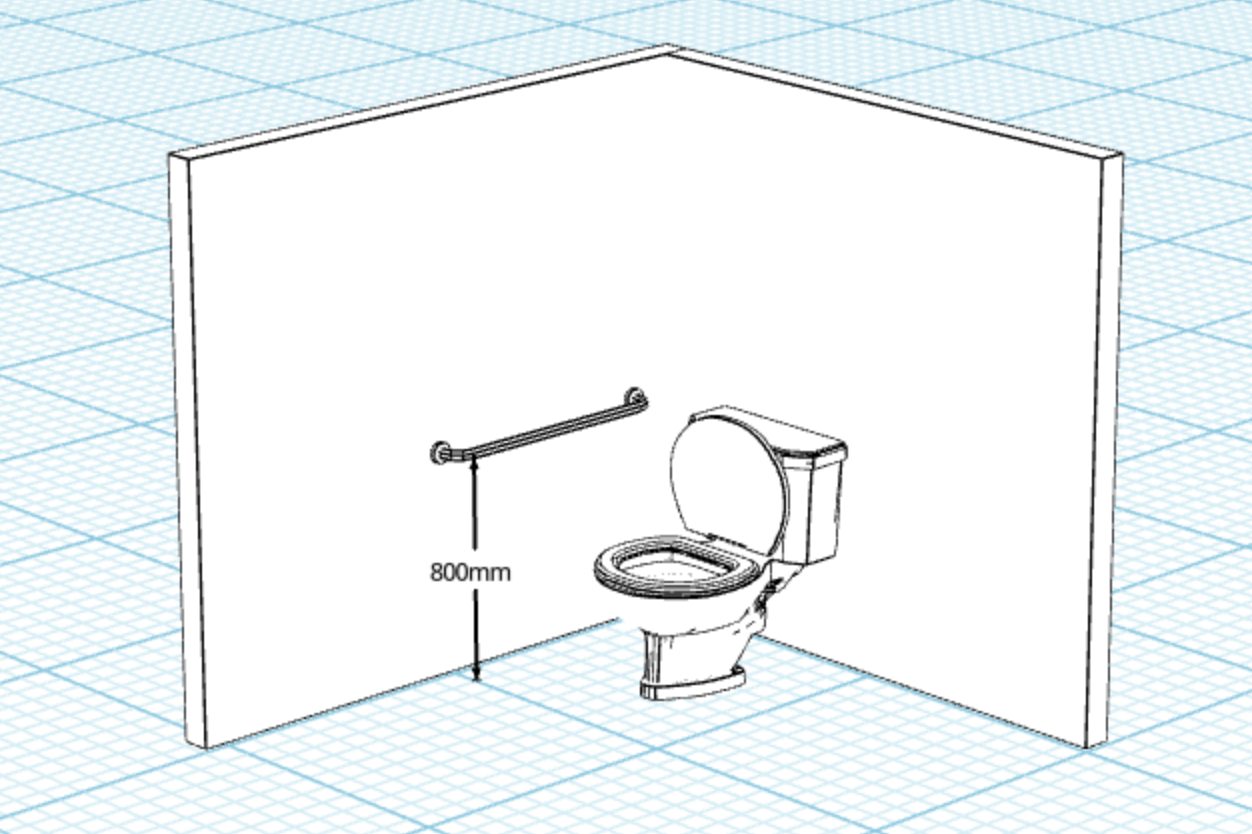
A horizontal grab rail mounted on a side wall next to the toilet is required to:
- Be placed at a height of 33 – 36 inches from FFL;
- Be a minimum of 42 inches in length;
- Be placed no more than 12 inches from the back wall;
- Extend at least 54 inches from the back wall;
- If there is a mounted toilet paper holder on this wall, the grab bar should be above the holder, which is required to be positioned at least 19 inches from FFL.
There are no specifications for vertical, angled, or drop-hinged toilet grab rails, so decisions surrounding these structures are left to the best judgment of the occupational therapist and builder or contractor.
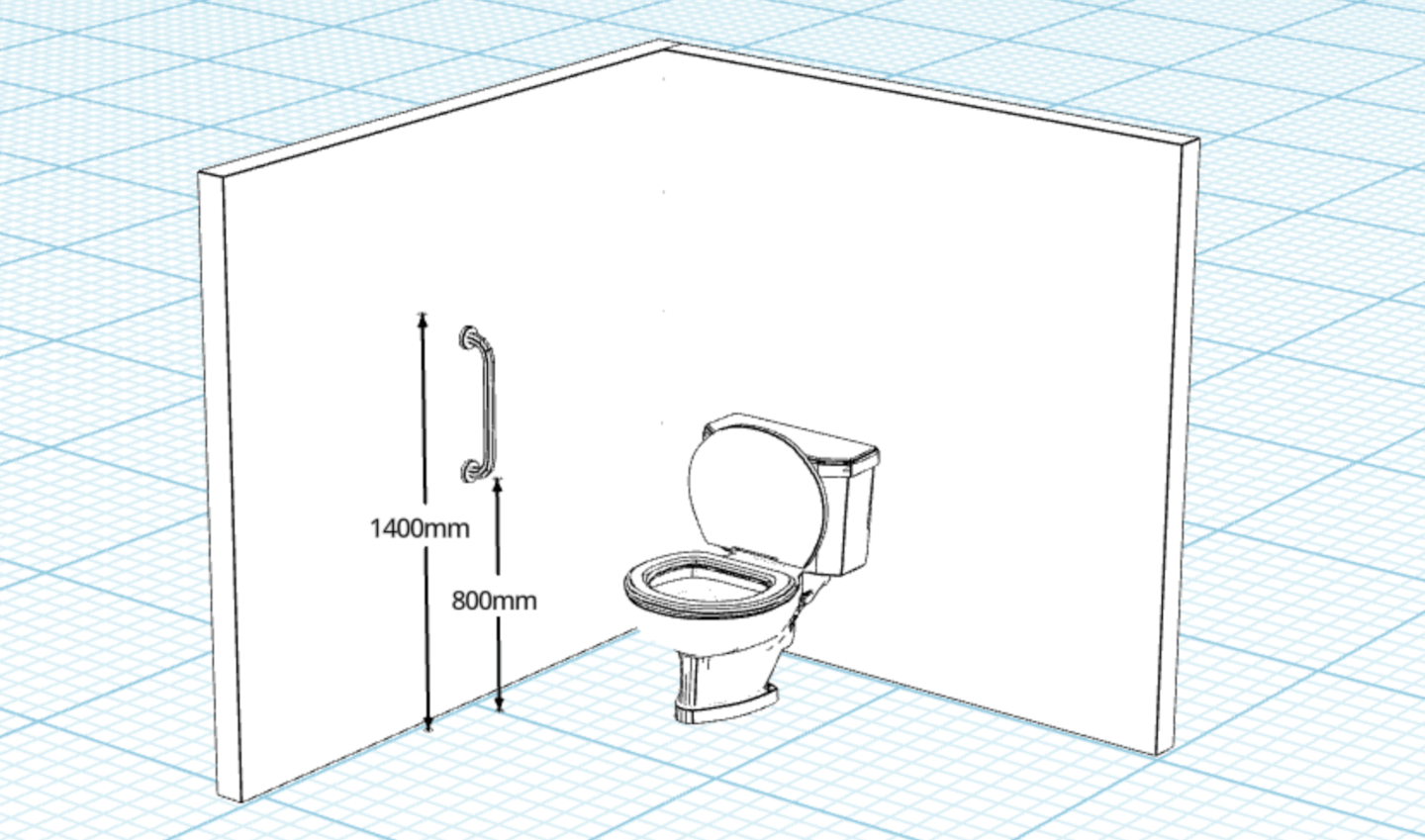
Stairs
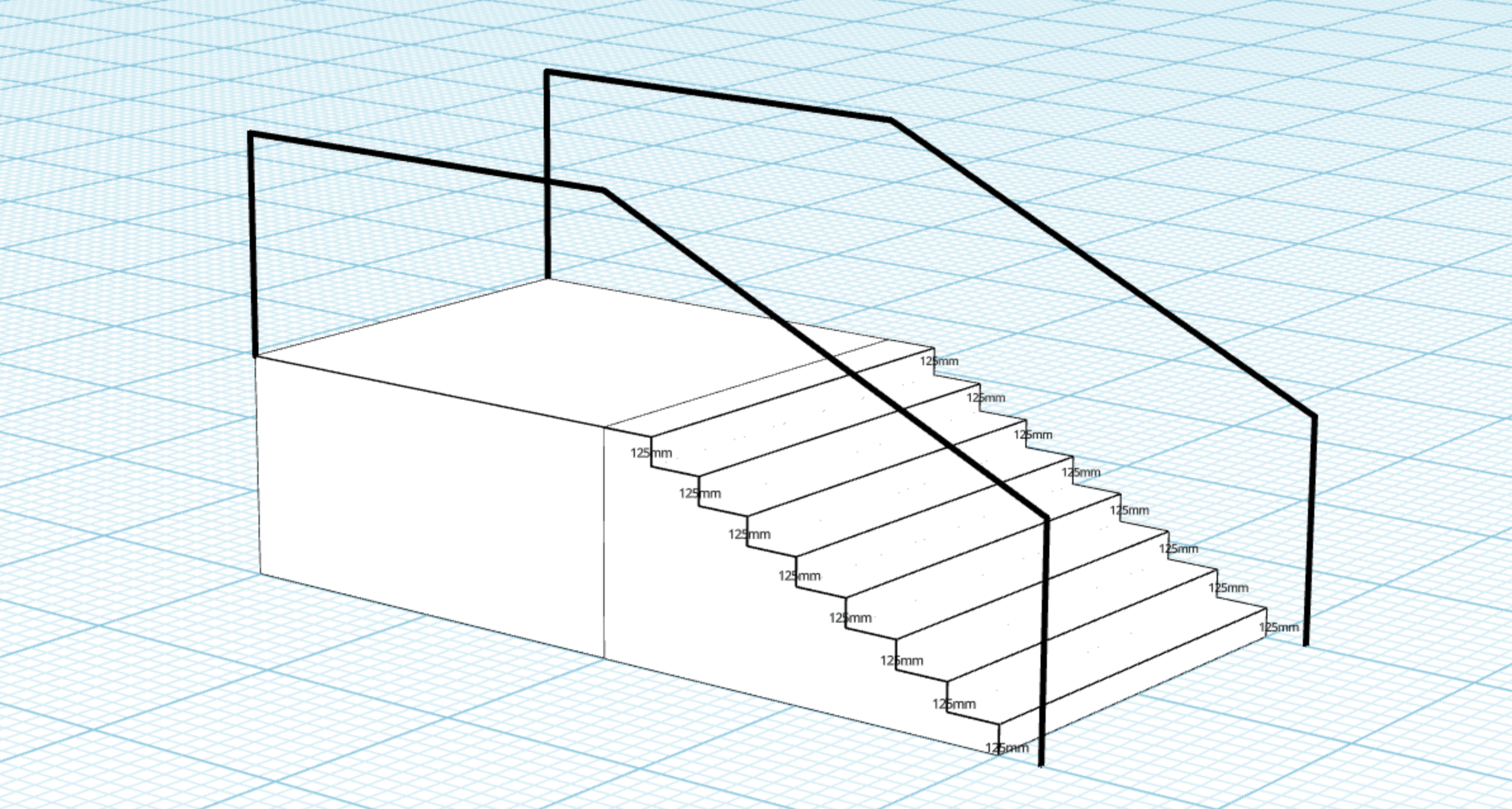
A handrail can be prescribed to assist an individual in traversing stairs. You can read more about stairs in our Occupational Therapist’s Guide to Stairs.
A handrail placed on stairs is recommended to:
- Run parallel to the gradient at the top of the stairs;
- Slope for a distance of the width of one tread from the bottom riser at the bottom of the stairs;
- Be continuous along both sides of the stairs whenever possible;
- Extend at least 12 inches past the top riser and at least 12 inches plus the width of one tread past the bottom riser, if the handrails are not continuous;
- Be mounted 1.5 inches from the wall;
- Have gripping surfaces that are free of obstructions;
- Have gripping surfaces mounted between 34 and 38 inches above stair nosings. The exact location within this range will be determined by the individual’s anthropometrics and how they interact with the environment;
- Be fixed within its fittings;
- Have a minimum clearance of 48 inches from the handrail on the opposing side of stairs.
Threshold step
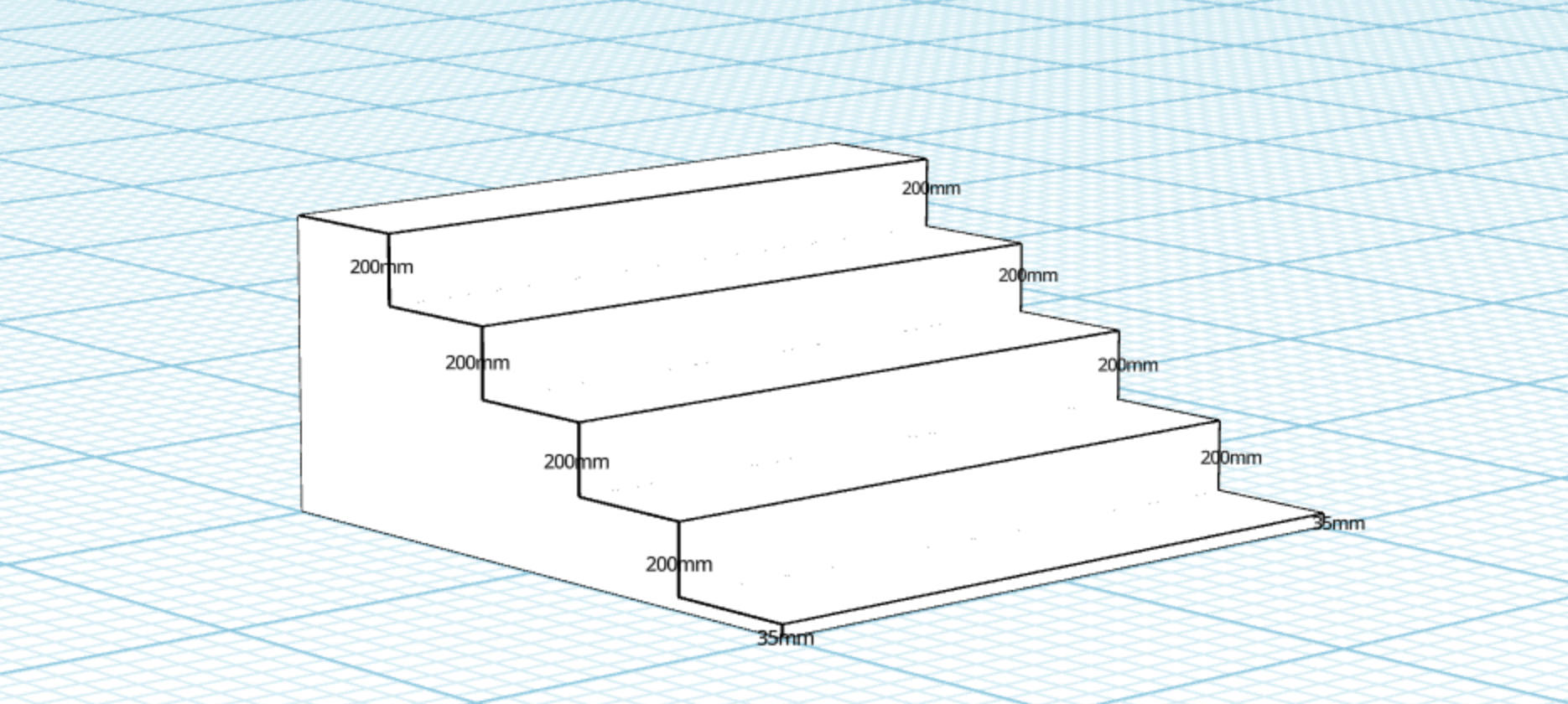
A step is considered to be a threshold step if the height is under .75 inches for exterior sliding doors and .5 inches for other door types. A rail placed at or near a threshold step, such as a step from a verandah/patio into a home, is recommended to:
- Be designed in a way that water will not accumulate on any walking surfaces;
- Have any necessary hardware (including rails) mounted no higher than 48 inches from FFL. The exact location within this range will be determined by the individual’s anthropometrics and how they interact with the environment;
- Be vertically positioned within close proximity of the threshold step without impeding the access or operation of a door.
Ramp
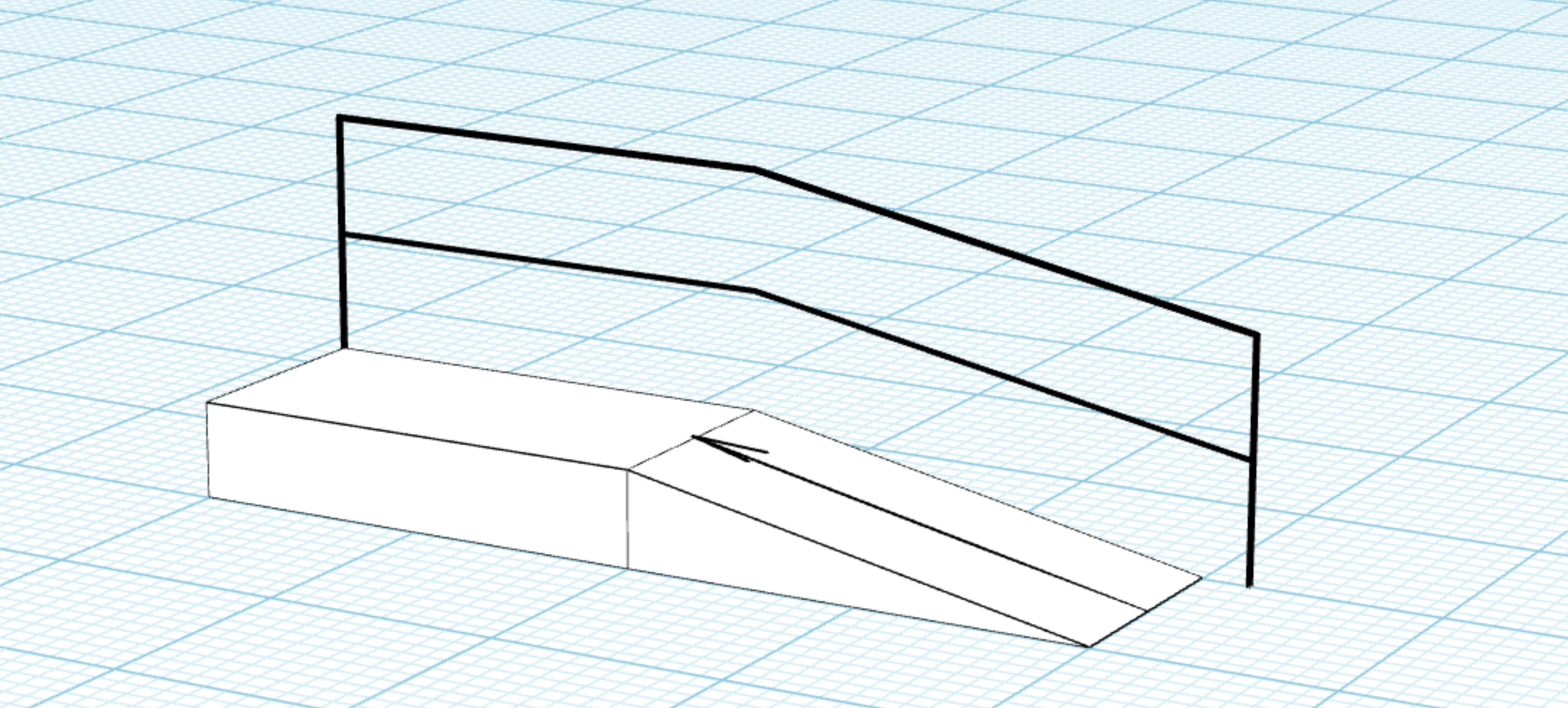
Handrails are prescribed at ramps to assist someone to ascend and descend. In this instance, a handrail is recommended to:
- Be installed on both sides of the ramp if its run has a rise greater than 6 inches or the ramp has a horizontal projection of more than 72 inches;
- Always be continuous if the handrail is inside on a switchback or dogleg ramp;
- Extend at least 12 inches past the top and bottom of the ramp and remain parallel to the ground, if the handrails are not continuous;
- Be mounted with 1.5 inches between the handrail and stabilizing wall or surface;
- Have continuous gripping surfaces;
- Be positioned between 34 and 38 inches above all ramp surfaces. The exact location within this range will be determined by the individual’s anthropometrics and how they interact with the environment;
- Have rounded edges or smoothly rest on the wall, floor, post, or other stabilizing surface;
- Be fixed within its fittings.
3. Documentation and Diagrams
Once you have completed a comprehensive functional assessment to determine the most appropriate rails for your client, you will need to communicate this to the builder or contractor who will be completing the work.
One way to do this is by writing a Scope of Works (SOW) which documents the works that you are recommending.
A scope of works will typically include:
- Photos of the space to be modified;
- A detailed description of the proposed modifications;
- Measurements of the existing space and proposed modifications; and
- Diagrams of the proposed modifications.
It is a good idea to include a clause for deviation in your scope of works advising the builder or contractor to contact the OT, if they are unable to install the rails in the recommended position.
This ensures that if the works need to deviate outside of the range that has been deemed functionally appropriate, the OT can re-assess the proposed location to evaluate whether the change is viable clinically.
To download our scope of works template, please click here.

